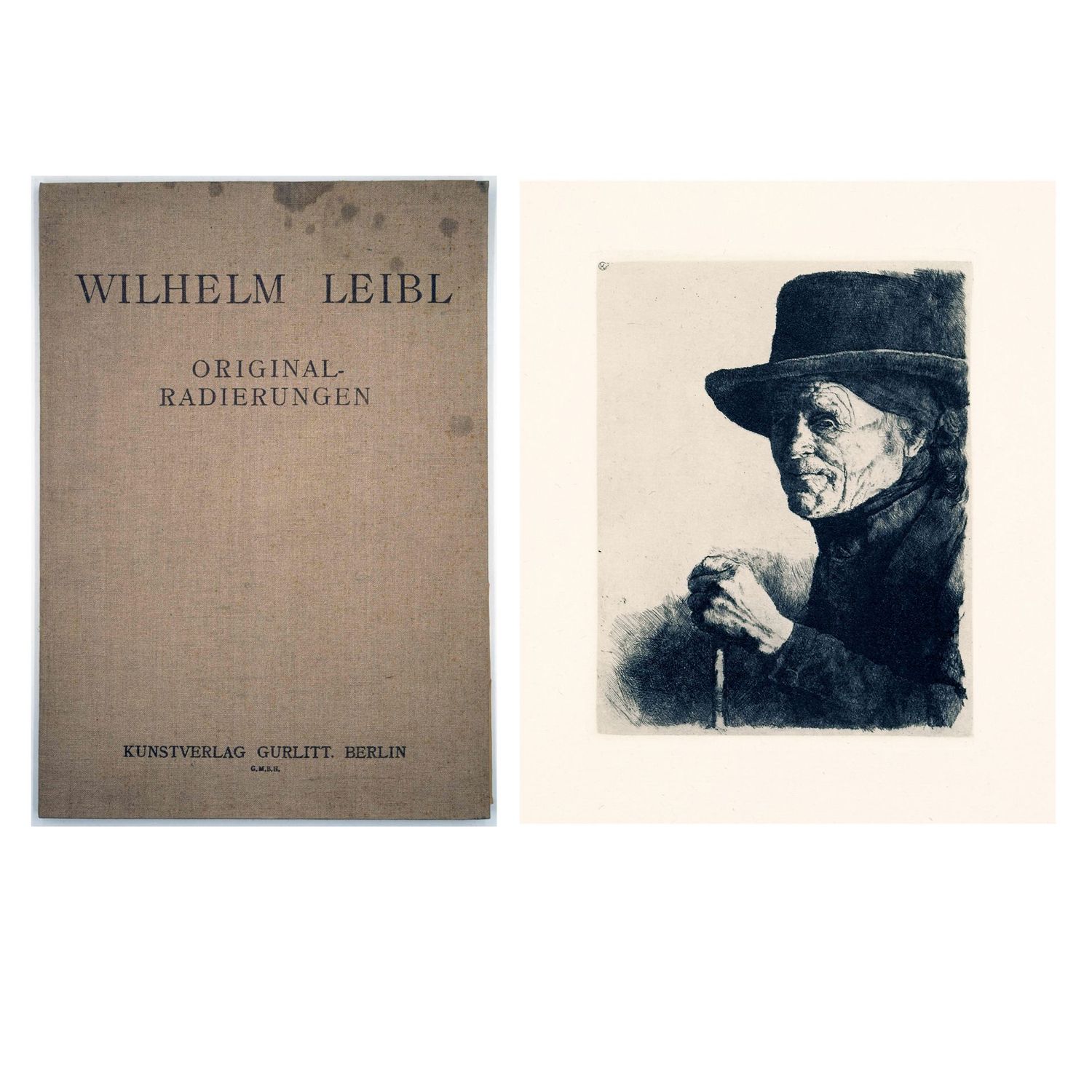Leibl, Wilhelm (1844-1900), Original Etchings, Kunstverlag Gurlitt, 1900
Wilhelm Leibl(1844 Cologne - 1900 Würzburg), Linen portfolio by Kunstverlag Gurlitt with 11 (of 11) original etchings , 1900, copy no. 67 / 100, 49.8 cm x 32 cm (portfolio size), 43.5 cm x 30 cm (sheet sizes), the etchings printed on old Dutch laid paper each under passepartout, print of the graphics by O. Felsing in Berlin, two sheets title and index. The portfolio contains the etchings Gronau 2, 3, 5, 10 and 13-19: Maler Wopfner /Maler Sperl / Bäuerin / Junge mit Krug / Leibl's Tante / Alte Frau mit Stock / Leibl's Haus / Landschaft / Ochsengespann / Mädchenkopf / Landschaft mit hohen Bäumen
- Portfolio stained in the upper area and somewhat foxed overall, etchings in very good condition
- Atmospheric conciseness -
Published in the year of Wilhelm Leibl's death, this portfolio comprises eleven sheets removed from the original plates. It represents a significant portion of his body of work, consisting of nineteen etchings. Thus, it pays homage to the etcher Leibl.
Inspired by Rembrandt, the images feature strong contrasts of light and dark, lending them a mysterious quality and robust character. These qualities form the basis for Leibl's masterful precision in capturing the motifs.
About the artist
Wilhelm Leibl first studied art with Franz Everhard Bourel and Hermann Heinrich Becker in Cologne. From 1863 to 1869, he attended the Munich Art Academy, where he became a master student of Karl von Piloty. While still a student, he created his work Frau Gedon, which was exhibited in Munich's Glaspalast in 1869 and earned him international admiration. After becoming aware of Leibl, Gustave Courbet invited him to Paris, where he socialized with German artists Hans Thoma, Louis Eysen, and Otto Scholderer, and discovered the art of Édouard Manet. While in Paris, Leibl won the Salon's gold medal for "Frau Gedon," a painting that had already been praised in Munich the previous year. The outbreak of war forced Leibl to return to Munich, where a circle of artists formed around him, including Wilhelm Trübner, Carl Schuch, Theodor Alt, Karl Haider, and Hans Thoma for a time. Leibl retired to the countryside outside Munich in 1873. It was during this time that he became involved in printmaking.Between 1873 and 1877, he produced a total of twelve etchings. In 1878, Leibl moved to Chiemgau and first settled in Berbling. Then, in 1881, he moved to Aibling. In 1893, he moved to Kutterling with the artist Johann Sperl. Following the first public purchases of his work, he was awarded the title of professor in 1891 and became an honorary member of the Berlin Academy in 1893. However, Leibl did not work as a university lecturer. In 1898, he traveled to Holland with the art dealer Ernst Seeger, where he studied the works of Frans Hals and Rembrandt in detail. These artists were important to him.
Due to his choice of motifs and their precise design, Wilhelm Leibl is considered the most important representative of German realism.

